- Joined
- 25 July 2007
- Messages
- 4,167
- Reaction score
- 3,834
Félix Amiot and SECM Corporate Timeline
The history of SECM and Félix Amiot personally are rather convoluted. Although not directly related to aircraft designations, a timeline may be useful for sorting out some of the details.
1894 - Oct 17,* Félix Amiot is born at Cherbourg in Normandy
- * Some sources say Félix Amiot was born in 1897
1908- Amiot family leave Cherbourg for Issy-les-Moulineaux
- Issy-les-Moulineaux is an outlying suburb of Paris
1912 - Félix Amiot completes his first aircraft design
- Amiot 01 monoplane at built at Issy-les-Moulineaux
1913 - Félix Amiot wrecks his sole Amiot 01 monoplane
- Amiot 01: Preserved at Musée de l'Air et de l'Espace
-- http://www.pyperpote.tonsite.biz/listinmae/index.php/les-appareils-en-reserve/224-amiot-01
1914 - September, Félix Amiot leaves for the front.
1915 - October, Félix Amiot called back to work for Morane-Saulnier
- Develops techniques for stamped alloy parts for the aircraft industry
1916 - Defence Minister Louis Loucheur proposes Amiot direct his own factory
- Ing. Loucheur was Ministre de l'Armement and Reconstitution industrielle
191? - Some sources claim Félix Amiot had a propellor works during WWI*
- * No mention of Amiot in Les héliciers français by Gérard Hartmann [1]
1916-1917 - Société d'Emboutissage et de Constructions Mécaniques* founded
- Financed by the owners of Les Parfums Chanel, Pierre & Paul Wertheimer
-- * SECM translating as the Stamping and Mechanical Engineering Company
1917 - SECM Avenue des Ternes, Paris plant license-builds/repairs aircraft*
-- * Built Bréguet Bré XIVs, repaired Morane-Saulnier & Sopwith airframes
1917 - Late, second SECM workshop created at Colombes in NW suburbs of Paris
- Construction also begins on a new SECM factory at the Colombes site
1917-1918 - SECM licensed-construction of Bréguet Bré XIV & Bré 19 biplanes
19?? - SECM license-construction of twin-engined Farman F.50 Bn2 biplane
- F.50 Bn2, 2 x 240 hp Lorraine 8Bb engines, span 22.85 m (unequal-span)
-- 3v: https://upload.wikimedia.org/wikipe..._Bn.2_dwg.jpg/1200px-Farman_F.50_Bn.2_dwg.jpg
1919 - SECM leaves Avenue des Ternes for 171 boulevard du Havre, Colombes
1919-1923 - SECM license-construction of Bréguet XIX biplanes at Colombes
1920 - Original aircraft design prototypes produced (SECM XX and type 100)*
-- * SECM XX Lutèce light biplane and the (unflown) SECM 100 night bomber
1921 - Official launch date for establishing SECM design office, Colombes
1922-1923 - Design of SECM 2-seat biplane trainer series prototypes
1925 - SECM license-construction of Dewoitine D 1ter fighter
- 18 Jan 1925, 1st SECM series D 1ter flew, SECM built x 108
1925 - Amiot develops SECM 120 series of large single-engine biplanes
- 1925 SECM 120, 1927 SECM 121/122/123, 1932 Amiot-SECM 124/125/126
1927-1928 - Liquidation of flying boat-maker, la Société Latham
1928 - Amiot buys ex-Latham plant at Caudebec-en-Caux in Normandy
- The Latham-designed flying boat, Amiot 110 S, completed in 1931
1929-1930 - State-owned Société Générale d'Aéronautique formed
- SGA combined 5 airframe firms* and Lorraine-Dietrich engines
-- * Incl. SECM-Amiot's Colombes and Caudebec-en-Caux plants [2]
19?? - SECM assembles CAMS 37 biplane flying boat (no details)*
- * Presumably all-metal CAMS 37/9 vers. built under SGA auspices
1934 - SGA 'money-pit' collapses, is broken up, and then sold off*
- * Félix Amiot and Wertheimers buy back both SECM factories [3]
1937 - Amiot's Caudebec-en-Caux, Normandy plant nationalized again
- The Caudebec-en-Caux facility then becomes part of SNCAN (Nord)
-- Result: SECM cannot recruit workers from Rouen industrial area
1938 - SCAN (Société des Chantiers Aéronautiques de Normandie) formed
- SCAN Cherbourg made up for lost production space at Caudebec-en-Caux
-- SCAN (sometime given as CAN) was a fully-owned subsidiary of SECM
1938 - July, SCAN wing prod'n scheduled to begin, delayed until 1939
- Being outside nationalization schemes, results in worker hortages*
-- * Due to locations and ministère du Travail favouring nat'd firms
1939 - January, Pierre Wertheimer visits US to plan aircraft plant
- New Orleans factory meant to get around Amiot's labour shortages
1939- - Air France Le Bourget/Orly hangars requisitioned for assembly
1939-1940 - Planned move of Amiot design office to new Evreux site
1940 - Planned assembly Amiot plant at Taverny (20 km NW of Paris)
1940 - June, Wertheimer brothers flee France (via Brazil) for US*
- * Some sources claim Pierre became a Director at Bell Aircraft
1940 - Félix Amiot and 3,000 workers head south for Unoccupied Zone
- Factory space in Marseilles refurb'd to maintain Vichy airframes
1943 - 1.2B franc contract with Junkers to produce 370 Ju 52/3ms*
- * Ju52/3mg14e models produced by Amiot factory at Colombes [4]
1944 - Ju 52/3m production for Luftwaffe begins at Amiot Colombes
1944 - November, French government requisitions SECM-Amiot plants
1944-1945 - Félix Amiot investigated for collaboration with Nazis
1946 - French government fully nationalizes former Amiot plants
1956 - Félix Amiot forms Constructions Mécaniques de Normandie [5]
- CMN shipyard would build racing craft & patrol boats for export
_________________________________________
[1] This claim is connected with the story that the Wertheimers bought a 50% interest in said Amiot propeller factory. In exchange, control of Les Parfums Chanel (which the Wertheimers had begun in 1924) was turned over to Félix Amiot for safe keeping. Minority shareholder Coco Chanel had been agitating for a greater share in the company. With the German occupation, Coco became a Nazi collaborator and denounced the Jewish Wertheimers. But, by then, control of this perfume business had been passed to the 'Aryan' Amiot. At the end of the war, Félix Amiot returned control of Les Parfums Chanel to the Wertheimer brothers.
[2] SGA's airframe-makers were formerly CAMS (Sartrouville), Hanriot (Paris and Bourges), Nieuport-Astra (Suresnes, Paris), SAB (Bacalan, Bordeaux), and SECM-Amiot (Colombes and Caudebec-en-Caux). Engine manufacturer Lorraine-Dietrich's factory was at Argenteuil (where some Amiot 350-series wings would later be built under subcontract).
[3] In the 1929 SGA nationalization, the state had paid 32M francs for SECM shares. The Wertheimer brothers and Félix Amiot bought back those majority shares in SECM for 9M francs.
[4] Production of the Ju 52/3m continued postwar in the same factory - by then renamed the Atelier Aéronautique de Colombes - under the AAC 1 designation. In total, around 415 Ju 52/3ms would be built at Colombes.
[5] Now CMN Yachts. Amiot's Cherbourg works were not part of the 1946 nationalization scheme.
_________________________________________
The history of SECM and Félix Amiot personally are rather convoluted. Although not directly related to aircraft designations, a timeline may be useful for sorting out some of the details.
1894 - Oct 17,* Félix Amiot is born at Cherbourg in Normandy
- * Some sources say Félix Amiot was born in 1897
1908- Amiot family leave Cherbourg for Issy-les-Moulineaux
- Issy-les-Moulineaux is an outlying suburb of Paris
1912 - Félix Amiot completes his first aircraft design
- Amiot 01 monoplane at built at Issy-les-Moulineaux
1913 - Félix Amiot wrecks his sole Amiot 01 monoplane
- Amiot 01: Preserved at Musée de l'Air et de l'Espace
-- http://www.pyperpote.tonsite.biz/listinmae/index.php/les-appareils-en-reserve/224-amiot-01
1914 - September, Félix Amiot leaves for the front.
1915 - October, Félix Amiot called back to work for Morane-Saulnier
- Develops techniques for stamped alloy parts for the aircraft industry
1916 - Defence Minister Louis Loucheur proposes Amiot direct his own factory
- Ing. Loucheur was Ministre de l'Armement and Reconstitution industrielle
191? - Some sources claim Félix Amiot had a propellor works during WWI*
- * No mention of Amiot in Les héliciers français by Gérard Hartmann [1]
1916-1917 - Société d'Emboutissage et de Constructions Mécaniques* founded
- Financed by the owners of Les Parfums Chanel, Pierre & Paul Wertheimer
-- * SECM translating as the Stamping and Mechanical Engineering Company
1917 - SECM Avenue des Ternes, Paris plant license-builds/repairs aircraft*
-- * Built Bréguet Bré XIVs, repaired Morane-Saulnier & Sopwith airframes
1917 - Late, second SECM workshop created at Colombes in NW suburbs of Paris
- Construction also begins on a new SECM factory at the Colombes site
1917-1918 - SECM licensed-construction of Bréguet Bré XIV & Bré 19 biplanes
19?? - SECM license-construction of twin-engined Farman F.50 Bn2 biplane
- F.50 Bn2, 2 x 240 hp Lorraine 8Bb engines, span 22.85 m (unequal-span)
-- 3v: https://upload.wikimedia.org/wikipe..._Bn.2_dwg.jpg/1200px-Farman_F.50_Bn.2_dwg.jpg
1919 - SECM leaves Avenue des Ternes for 171 boulevard du Havre, Colombes
1919-1923 - SECM license-construction of Bréguet XIX biplanes at Colombes
1920 - Original aircraft design prototypes produced (SECM XX and type 100)*
-- * SECM XX Lutèce light biplane and the (unflown) SECM 100 night bomber
1921 - Official launch date for establishing SECM design office, Colombes
1922-1923 - Design of SECM 2-seat biplane trainer series prototypes
1925 - SECM license-construction of Dewoitine D 1ter fighter
- 18 Jan 1925, 1st SECM series D 1ter flew, SECM built x 108
1925 - Amiot develops SECM 120 series of large single-engine biplanes
- 1925 SECM 120, 1927 SECM 121/122/123, 1932 Amiot-SECM 124/125/126
1927-1928 - Liquidation of flying boat-maker, la Société Latham
1928 - Amiot buys ex-Latham plant at Caudebec-en-Caux in Normandy
- The Latham-designed flying boat, Amiot 110 S, completed in 1931
1929-1930 - State-owned Société Générale d'Aéronautique formed
- SGA combined 5 airframe firms* and Lorraine-Dietrich engines
-- * Incl. SECM-Amiot's Colombes and Caudebec-en-Caux plants [2]
19?? - SECM assembles CAMS 37 biplane flying boat (no details)*
- * Presumably all-metal CAMS 37/9 vers. built under SGA auspices
1934 - SGA 'money-pit' collapses, is broken up, and then sold off*
- * Félix Amiot and Wertheimers buy back both SECM factories [3]
1937 - Amiot's Caudebec-en-Caux, Normandy plant nationalized again
- The Caudebec-en-Caux facility then becomes part of SNCAN (Nord)
-- Result: SECM cannot recruit workers from Rouen industrial area
1938 - SCAN (Société des Chantiers Aéronautiques de Normandie) formed
- SCAN Cherbourg made up for lost production space at Caudebec-en-Caux
-- SCAN (sometime given as CAN) was a fully-owned subsidiary of SECM
1938 - July, SCAN wing prod'n scheduled to begin, delayed until 1939
- Being outside nationalization schemes, results in worker hortages*
-- * Due to locations and ministère du Travail favouring nat'd firms
1939 - January, Pierre Wertheimer visits US to plan aircraft plant
- New Orleans factory meant to get around Amiot's labour shortages
1939- - Air France Le Bourget/Orly hangars requisitioned for assembly
1939-1940 - Planned move of Amiot design office to new Evreux site
1940 - Planned assembly Amiot plant at Taverny (20 km NW of Paris)
1940 - June, Wertheimer brothers flee France (via Brazil) for US*
- * Some sources claim Pierre became a Director at Bell Aircraft
1940 - Félix Amiot and 3,000 workers head south for Unoccupied Zone
- Factory space in Marseilles refurb'd to maintain Vichy airframes
1943 - 1.2B franc contract with Junkers to produce 370 Ju 52/3ms*
- * Ju52/3mg14e models produced by Amiot factory at Colombes [4]
1944 - Ju 52/3m production for Luftwaffe begins at Amiot Colombes
1944 - November, French government requisitions SECM-Amiot plants
1944-1945 - Félix Amiot investigated for collaboration with Nazis
1946 - French government fully nationalizes former Amiot plants
1956 - Félix Amiot forms Constructions Mécaniques de Normandie [5]
- CMN shipyard would build racing craft & patrol boats for export
_________________________________________
[1] This claim is connected with the story that the Wertheimers bought a 50% interest in said Amiot propeller factory. In exchange, control of Les Parfums Chanel (which the Wertheimers had begun in 1924) was turned over to Félix Amiot for safe keeping. Minority shareholder Coco Chanel had been agitating for a greater share in the company. With the German occupation, Coco became a Nazi collaborator and denounced the Jewish Wertheimers. But, by then, control of this perfume business had been passed to the 'Aryan' Amiot. At the end of the war, Félix Amiot returned control of Les Parfums Chanel to the Wertheimer brothers.
[2] SGA's airframe-makers were formerly CAMS (Sartrouville), Hanriot (Paris and Bourges), Nieuport-Astra (Suresnes, Paris), SAB (Bacalan, Bordeaux), and SECM-Amiot (Colombes and Caudebec-en-Caux). Engine manufacturer Lorraine-Dietrich's factory was at Argenteuil (where some Amiot 350-series wings would later be built under subcontract).
[3] In the 1929 SGA nationalization, the state had paid 32M francs for SECM shares. The Wertheimer brothers and Félix Amiot bought back those majority shares in SECM for 9M francs.
[4] Production of the Ju 52/3m continued postwar in the same factory - by then renamed the Atelier Aéronautique de Colombes - under the AAC 1 designation. In total, around 415 Ju 52/3ms would be built at Colombes.
[5] Now CMN Yachts. Amiot's Cherbourg works were not part of the 1946 nationalization scheme.
_________________________________________
Last edited:

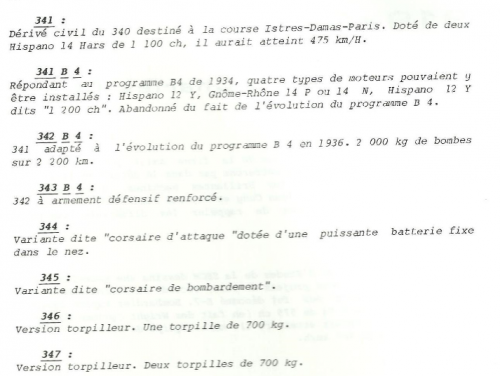
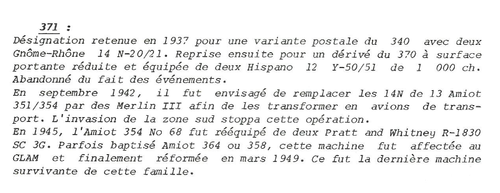



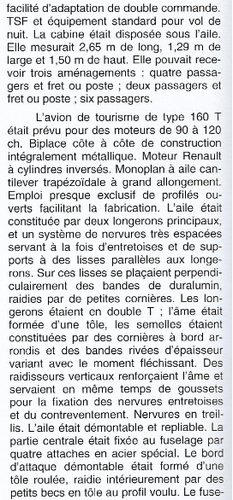



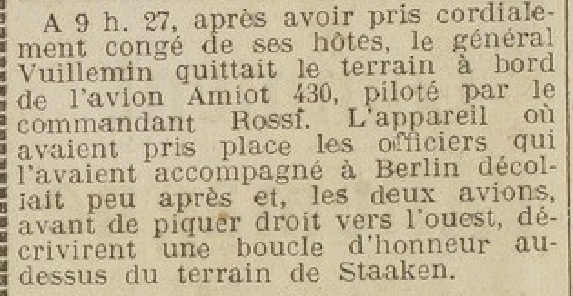
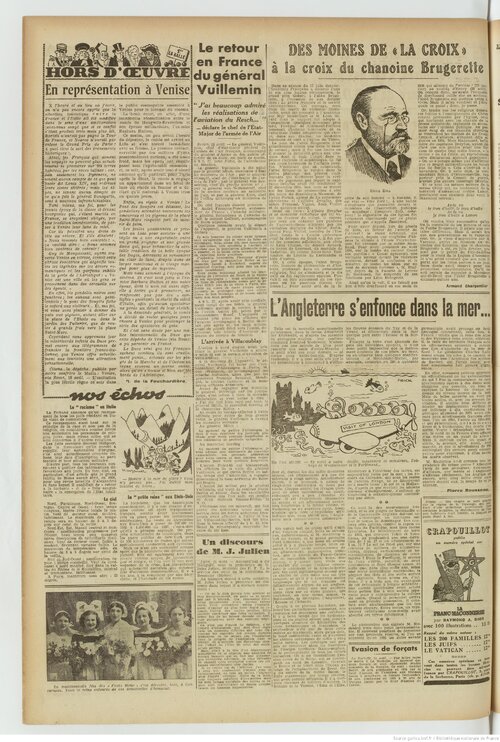


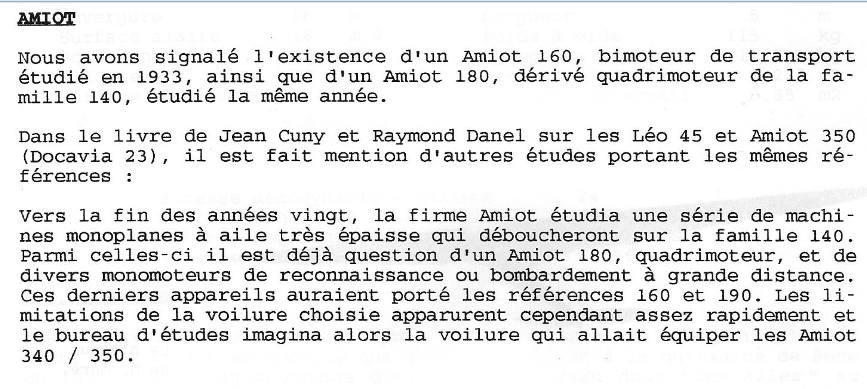
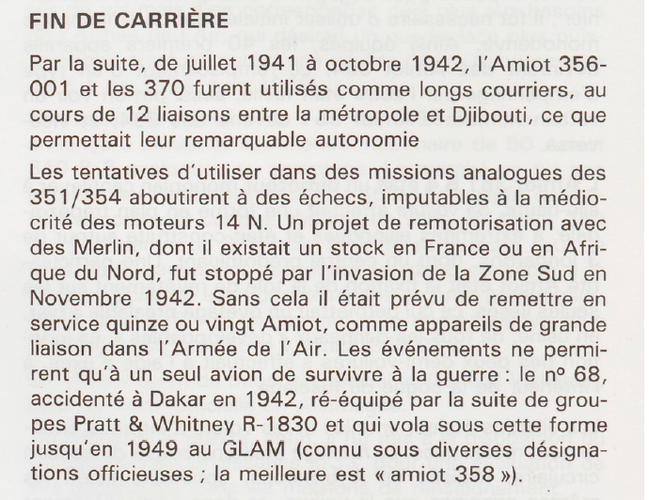
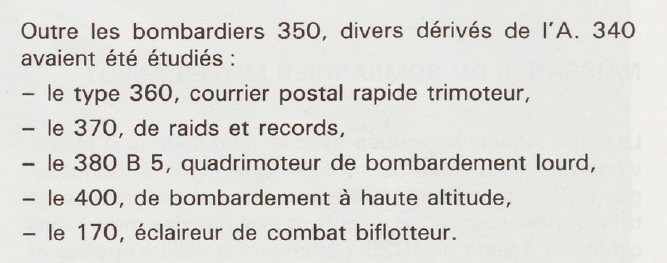
![Pégase___revue_de_l'association_[...]Association_des_bpt6k5326540c_15.jpeg](/data/attachments/180/180552-1a5eae930ead6496660eb4e8bac551e8.jpg)